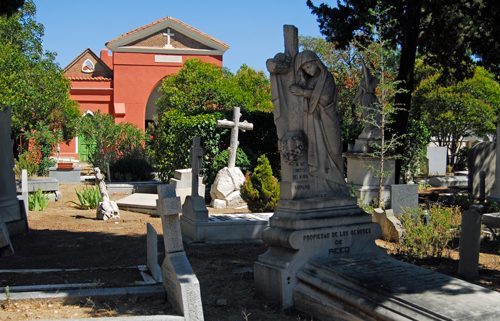Alberto Rubio
Being foreign diplomat in Spain, and in Madrid to be exact, was not always synonymous with privilege. Until 1854, at least as regards being buried, the mortal remains of the non-Catholic ran the risk of being left unprotected. Diplomatic immunity did not cover this circumstance.
The case of the secretary of Ambassador Lord Digby, sent by King James I to Madrid in 1662, is possibly the most scandalous. Mr. Hole, that was his name, died when he arrived in Santander and his mortal remains were thrown to the sea in a box, since he was denied a “holy” burial. Nevertheless, the worst was yet to come, according to John Somers, since “fishermen, fearing they would not have catch while the corpse was in the water, took him out and the body of our brother and compatriot was abandoned in the fields to feed birds of prey”.
In contrast to the gloomy description provided by Somers, there were other cases where the deceased were luckier. Such as that of Mr. Washington, a page of the Prince of Wales who was buried next to a fig tree in the garden of the British Embassy in 1623, or that of one of Cromwell’s envoys in 1650, as Carlos Saguar tells in his essay “The British Cemetery in Madrid”.
None of the above cases was exempt from negotiations, of course, since back then, and not only in Spain, those professing a religion different from the country were not allowed to worship it, to show their faith publicly or to be buried.
It is also true that back then in Spain, even nationals had problems to be buried: until 1833 there were more Spanish towns without cemetery than with it. However, that was the least of England’s worries, since its ambassadors constantly remembered that the nonexistence of a churchyard for non-Catholic contravened what had been agreed on the peace treaties of 1667 and 1713.
It was not easy, but in 1851 the Queen Isabella II finally granted England a license to build the necropolis it claimed, as Carlos Saguar tells in his essay “The British Cemetery in Madrid”. Its first inhabitant was “Arturo”, a young man no one knows too much about, who lies under a gravestone with Excalibur’s sword sculpted.
Since then, this small churchyard, in the neighbourhood of Carabanchel, accommodates the graves of about twenty diplomats of different nationalities and some of their relatives.
According to the exhaustive recount of its keeper, David J. Butler, there are six British, three Dutch, three Swedes, two Czechs, two Bulgarians, a Norwegian, a Russian, a Polish, a Yugoslav, a Romanian and a Swiss lying under the gravestones. Among them, there are the British Arthur Yencken and Charles Caldwell and the Russian Ambassador, The Baron Theodore de Budberg (see The Diplomat).
In 1846, with some black humour, the English hispanist Richard Ford wrote in his book “Gatherings from Spain”: “do try, kind Protestant reader, not to die in Spain, unless it is in Cádiz or in Málaga, where, if you want to be buried in a Christian way, there is a place for heretics”. Fortunately, it is not like that anymore.






